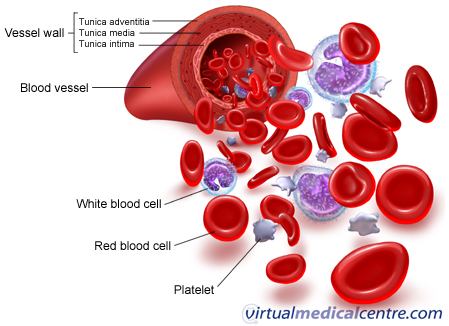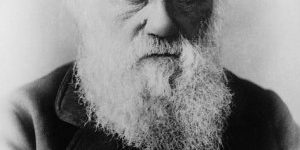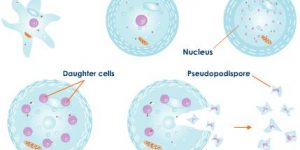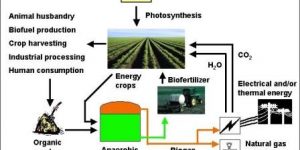Blood is an essential part of the body of every human and most animals and insects. This is a liquid which is red in color. Blood is a living tissue which constantly circulates throughout the human body. Blood contains two main components:
1- Blood Cells
2- Blood Plasma
Blood plasma is nonliving, pale yellow, intercellular matrix. 90% of blood plasma is water while the other 10% are different constituents like nutrients, plasma proteins, enzymes, vitamins, hormones and others.
Types of Blood Cells
Blood cells can be divided in three groups:
1- Erythrocytes (red blood cells)
2- Leucocytes (white blood cells)
3- Thrombocytes (blood platelets). These cells are formed by the stem cells located in the bone marrow.
Erythrocytes are round, light red and biconcave. They do not contain any mitochondria or nucleus. Their membrane is very elastic and thin. The cytoplasm of erythrocytes contains haemoglobin which is made from protein rich on iron. Iron gives haemoglobin its red color.
Haemoglobin is an essential part of the human organism, because it drains oxygen from the lungs and creates oxyhaemoglobin which takes oxygen to all body cells. Haemoglobin does the exact opposite as well – it gathers carbon dioxide from the cells and gets it back to the lungs. Every day three million erythrocytes die and are replace by new erythrocytes created in the bone marrow. An erythrocyte lives for approximately 120 days.
Leucocytes come in different shapes, sizes and appearance and they don’t contain respiratory pigment. Their main goal is to destroy harmful toxins and microorganisms which are a threat to the organism. They have the ability to pass through the membrane of the capillaries and they can reach any part of he body. Basically, white blood cells protect your body from different threats.
Blood platelets look like spindles and they are just small fragments of the cells found in blood. They have a very thin & sensitive membrane and don’t contain any nucleus. Wounds are nothing more than ruptured blood vessels. Whenever you wound yourself, you see blood oozing out of the wound. The blood contacts air and initiates the clotting process.



